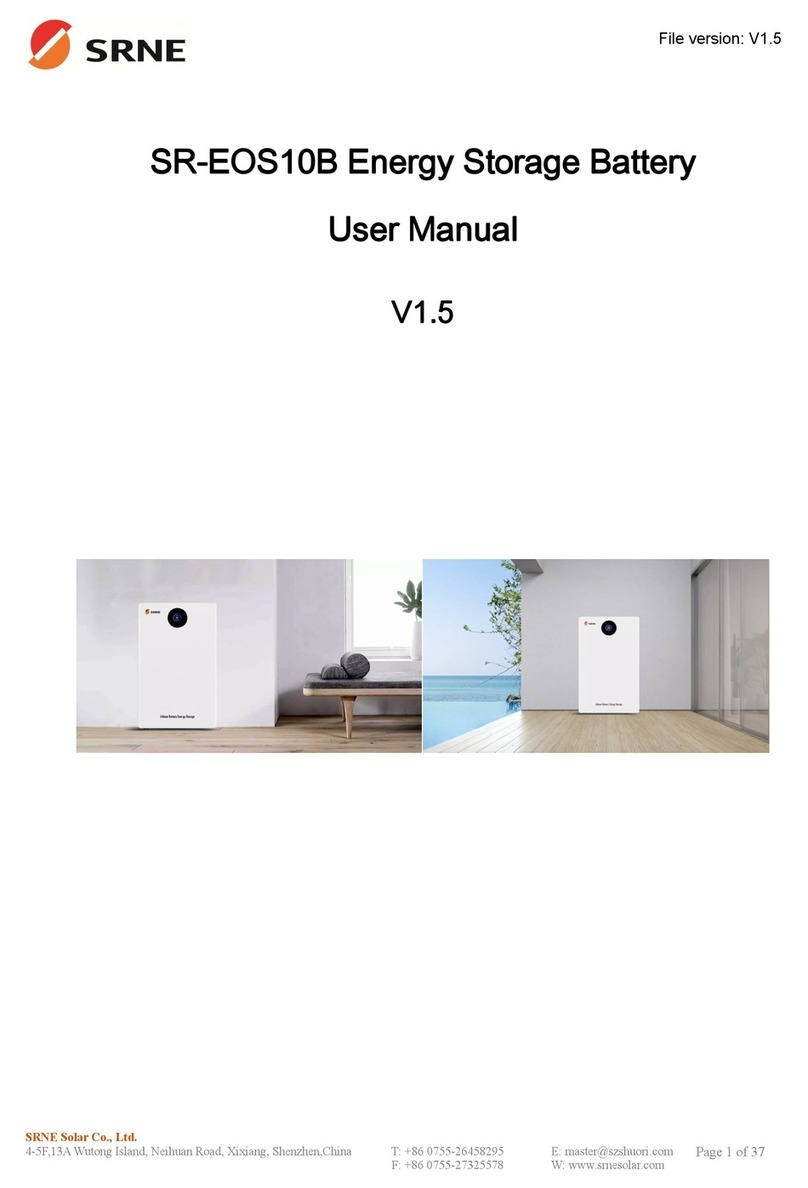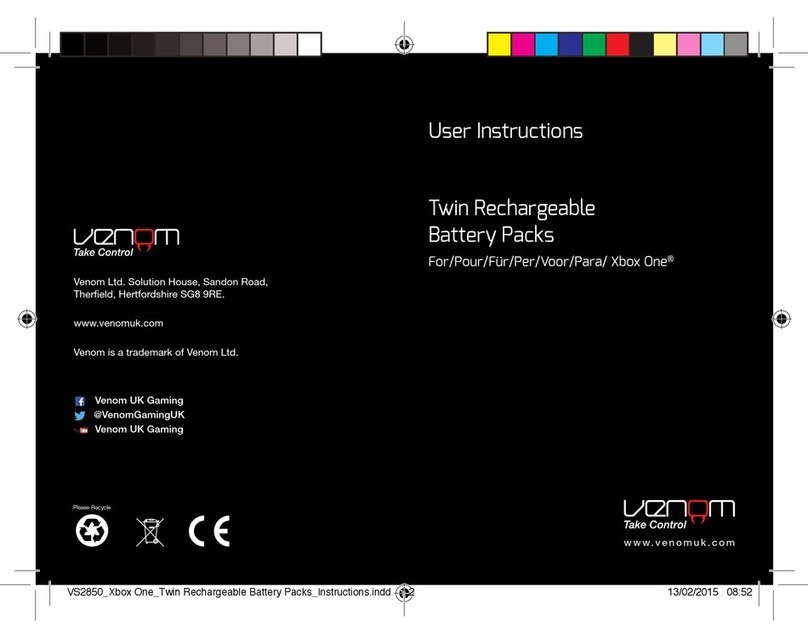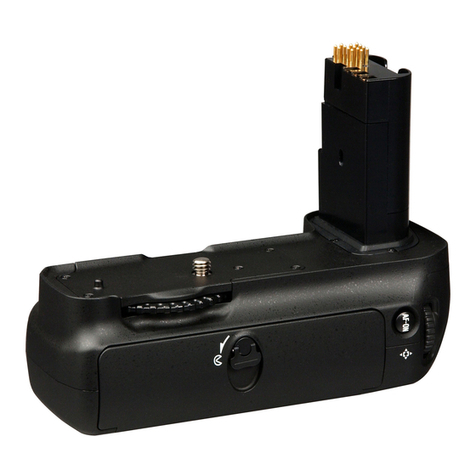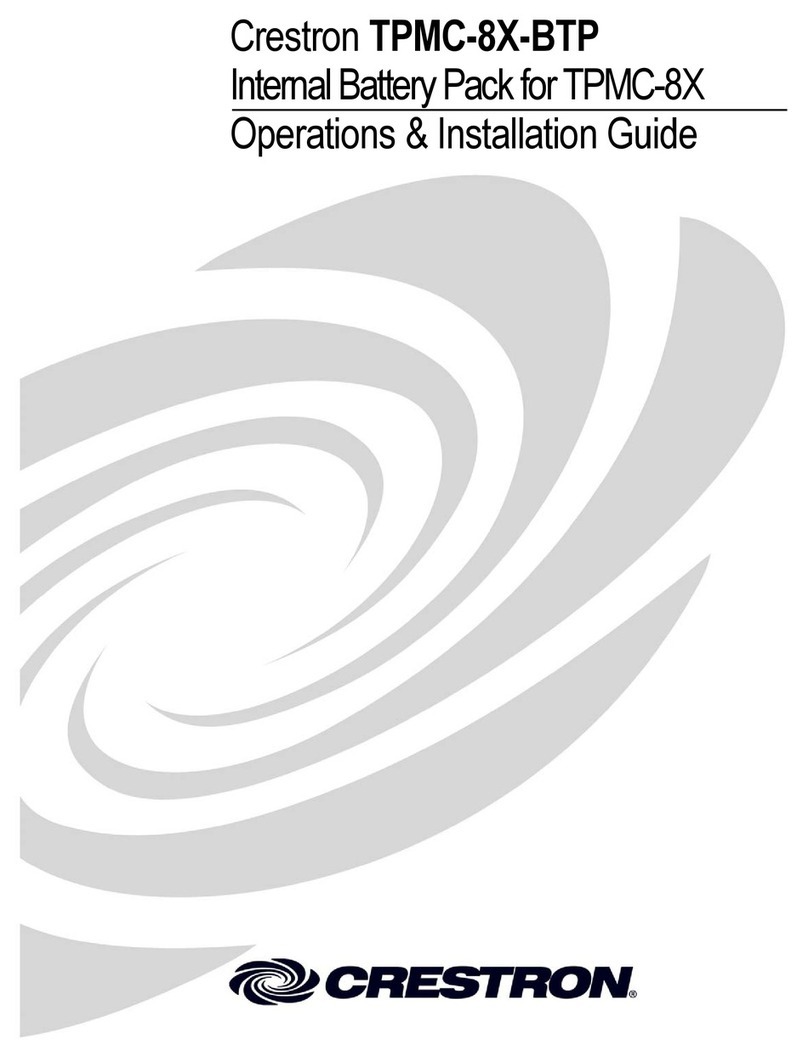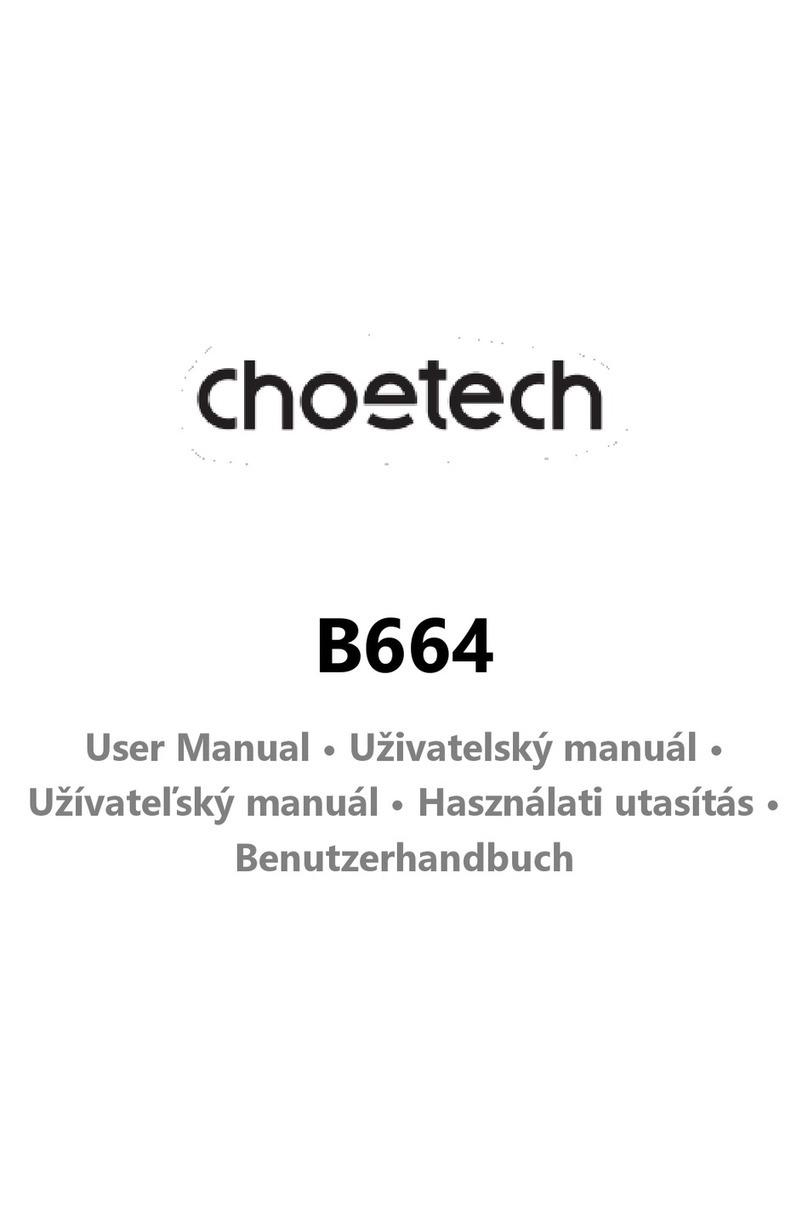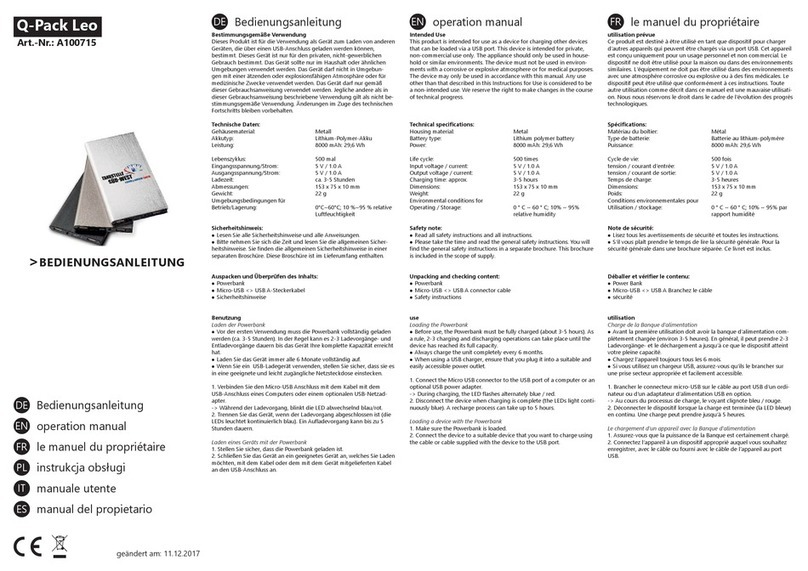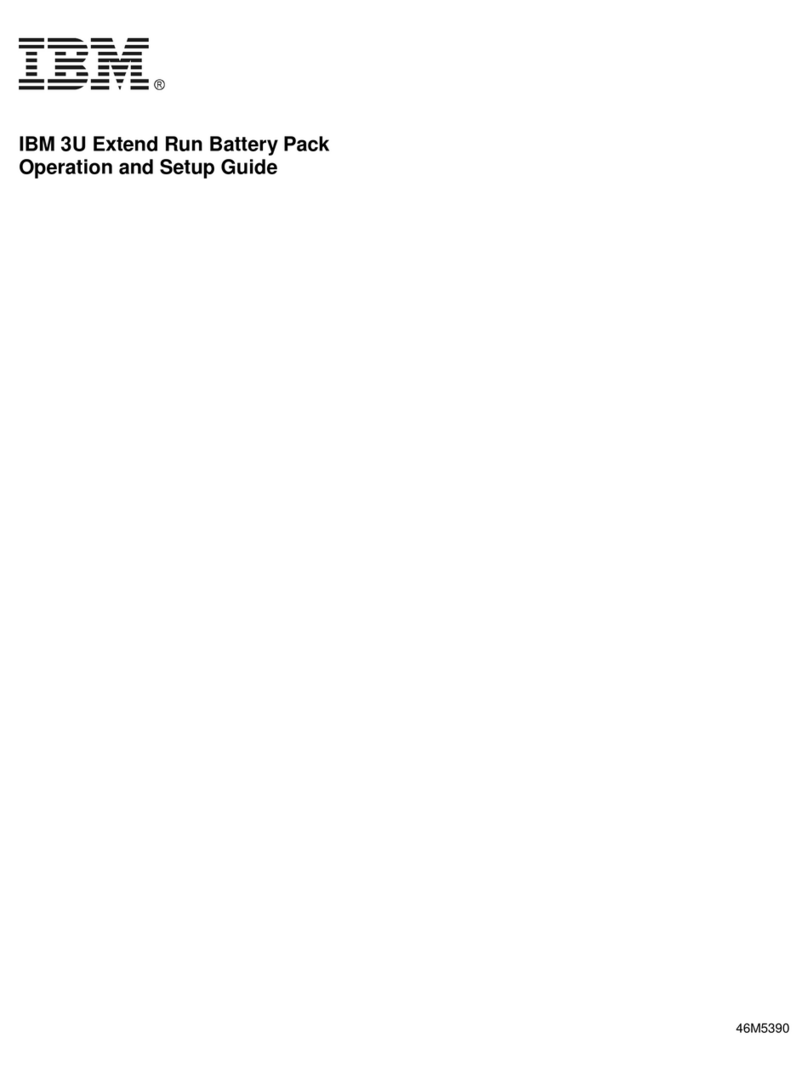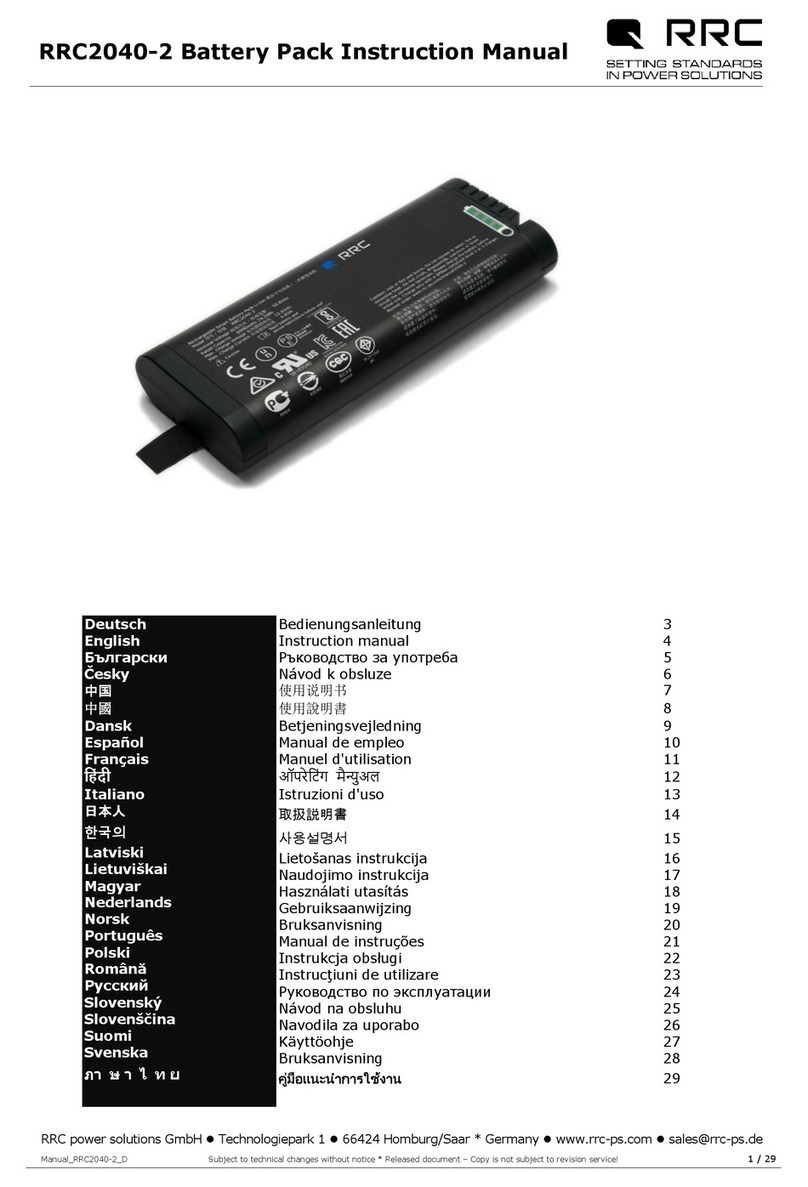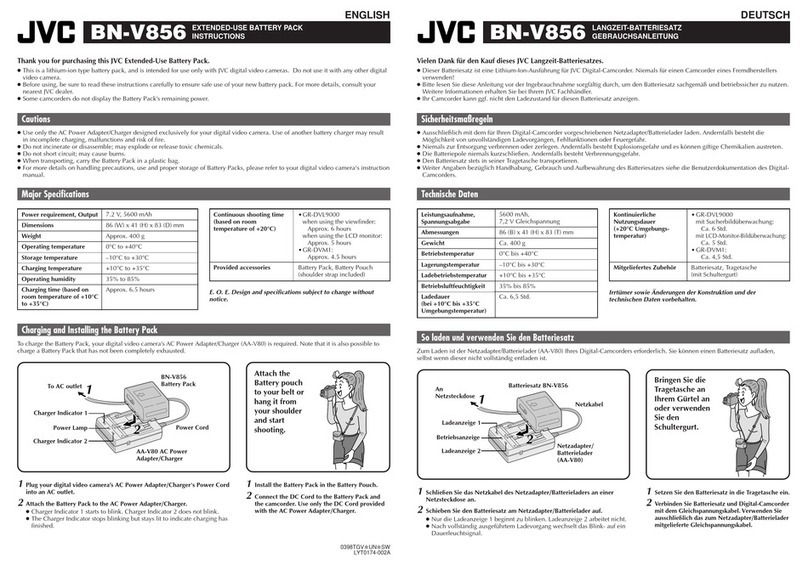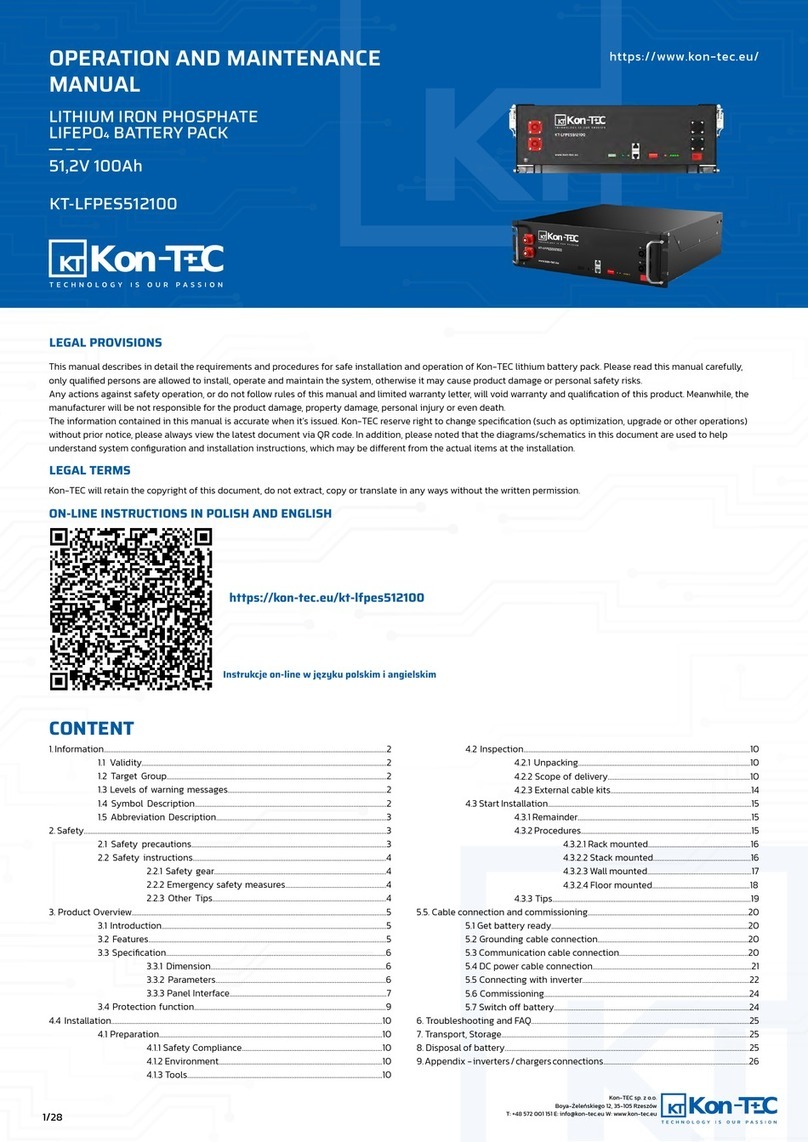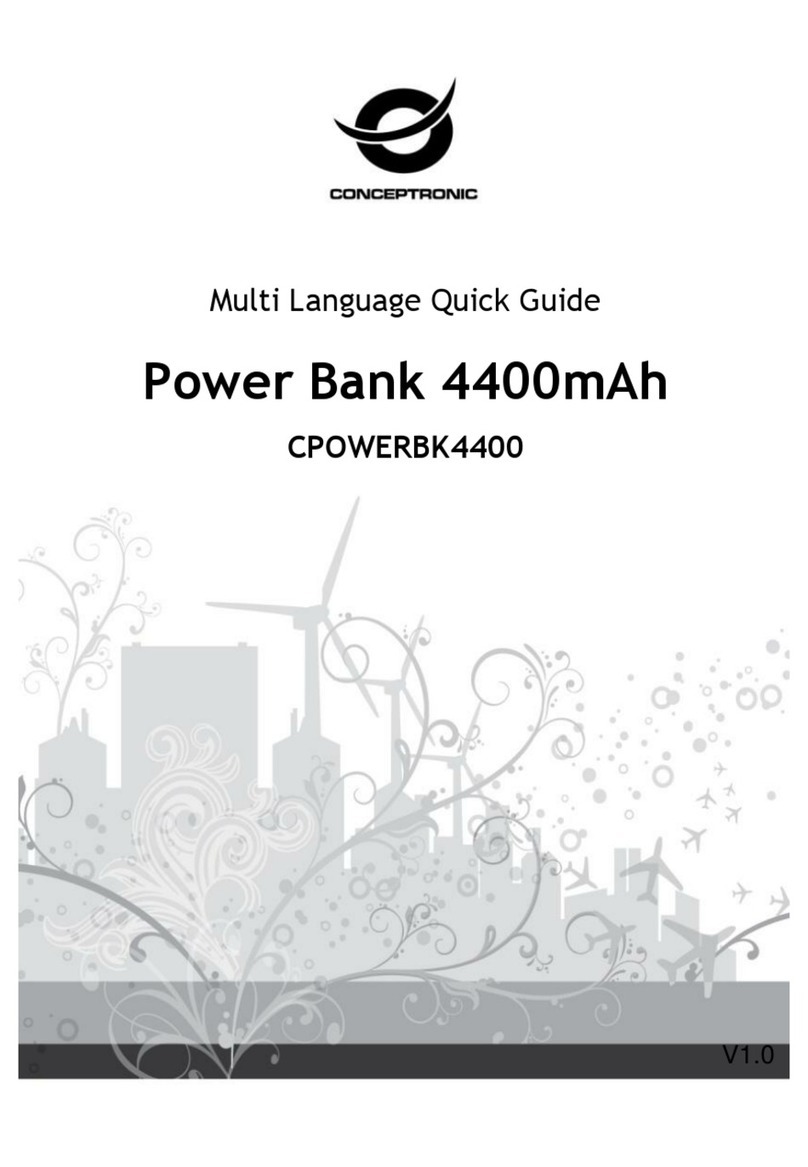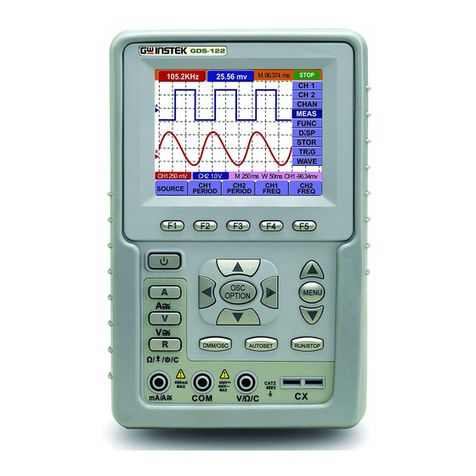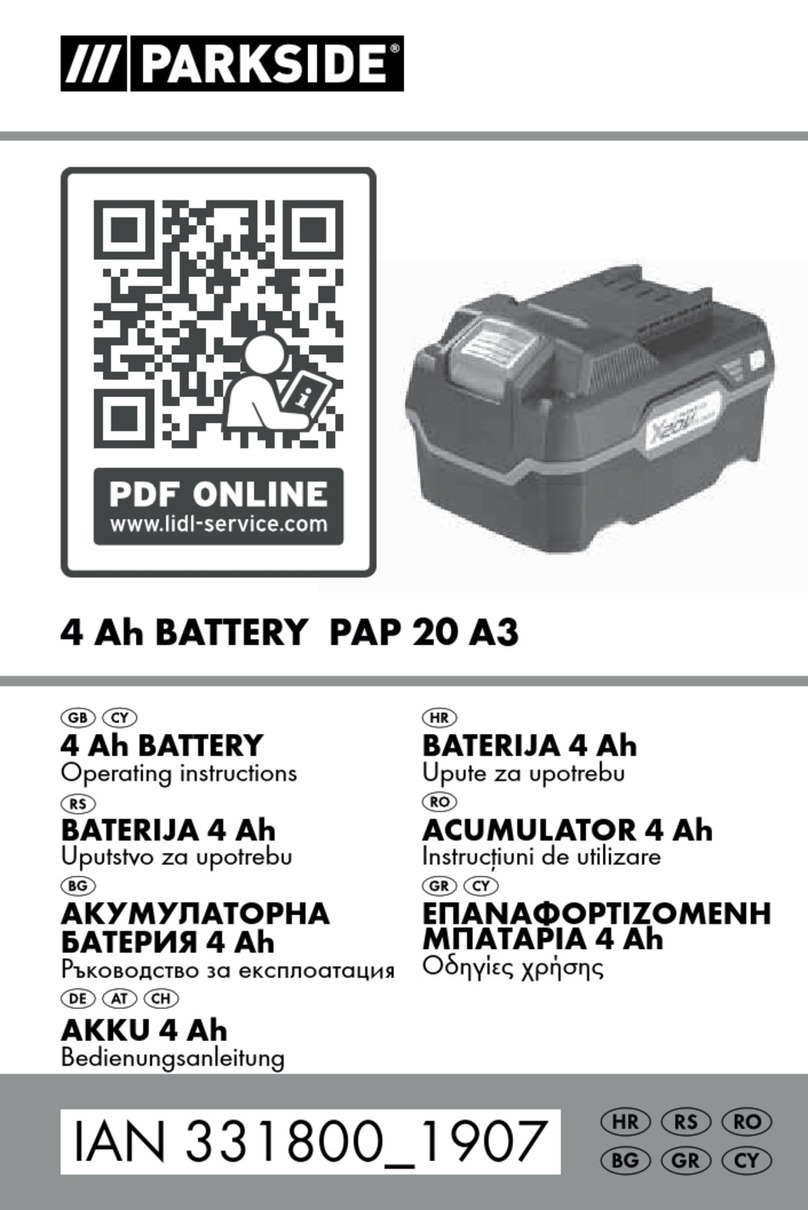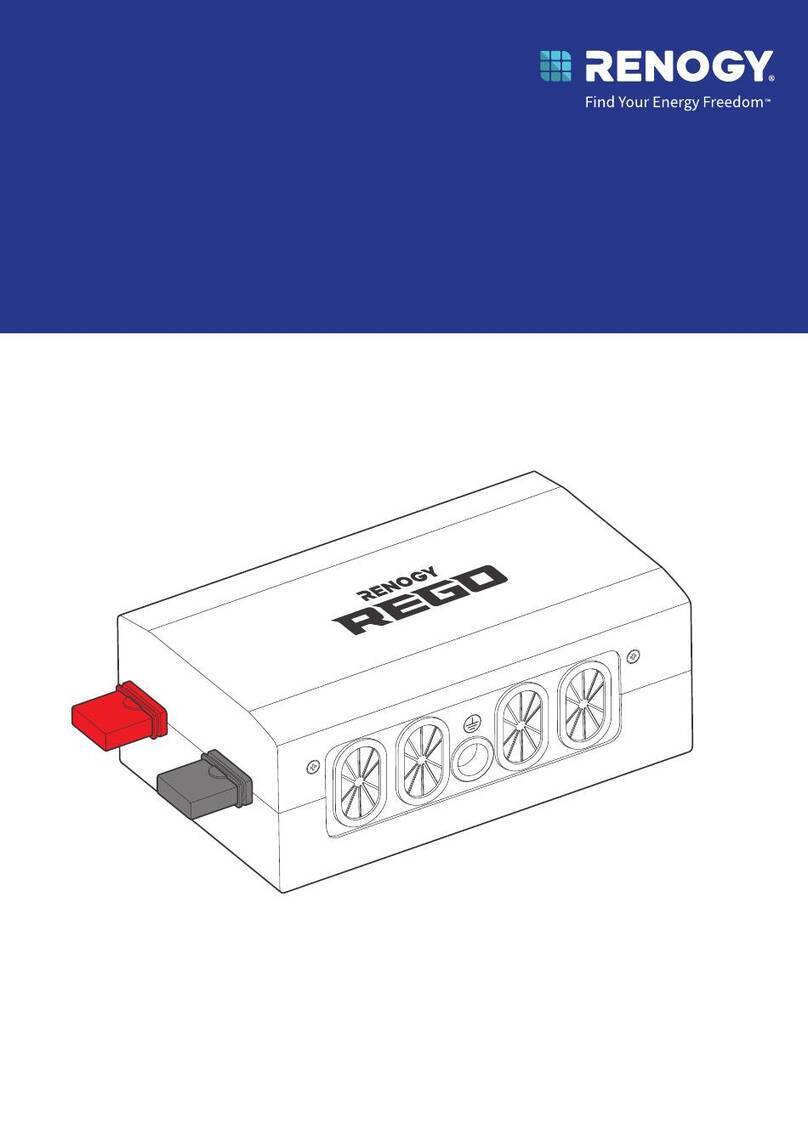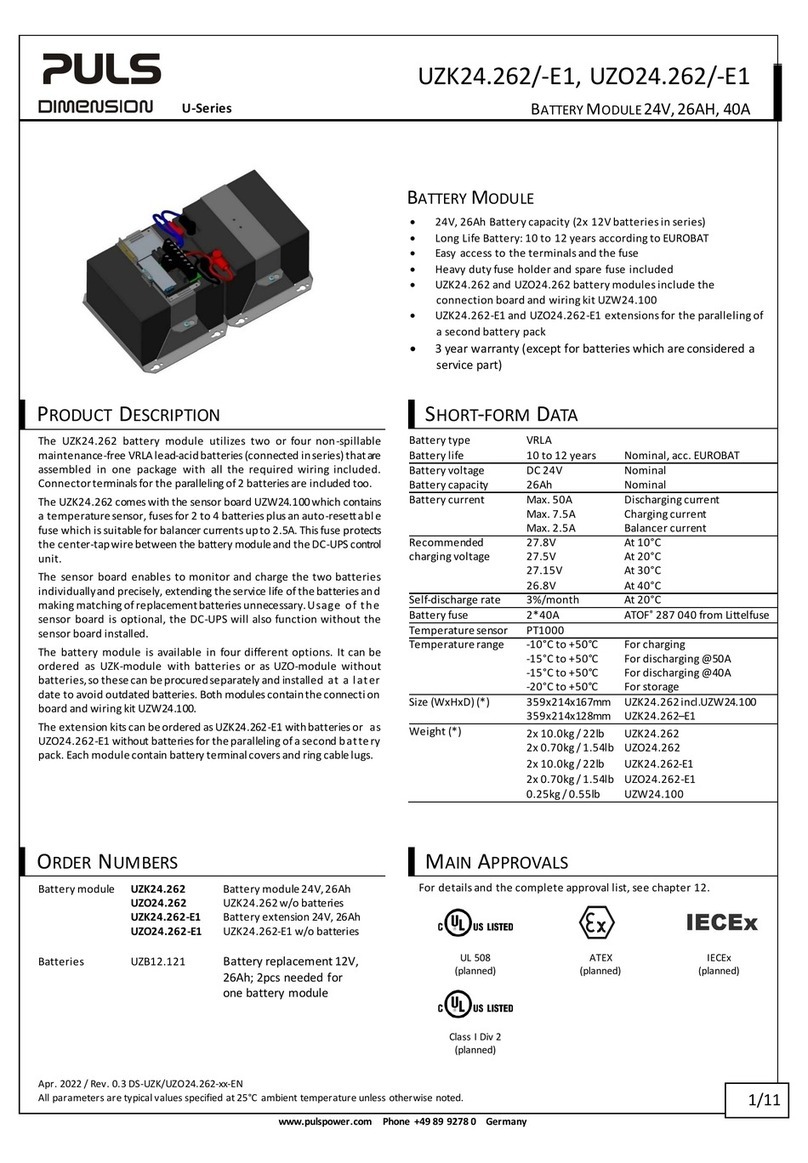Solar Stik 24VDC Li ESM 2000 Installation instructions

|1April 2022 |Solar Stik® Inc.
OPERATOR AND MAINTENANCE
MANUAL
FOR THE
24VDC Li ESM 2000
Updated: 20220408
DISTRIBUTION STATEMENT A. Approved for public release; distribution is unlimited.
Initial Release
P/N 21-0202317

Operator and Maintenance Manual for the 24VDC Li ESM 2000
April 2022 |Solar Stik® Inc.2 |
Safety Information Labels
Your safety and the safety of others is very important.
Always read and obey all safety messages.
This is the safety alert symbol. This symbol alerts you to potential hazards that can kill you or
hurt you and others. All safety messages will follow the safety alert symbol and the word
“DANGER”, “WARNING”, or “CAUTION”. These words are dened as:
DANGER Indicates a hazardous situation which, if not avoided, will result in death or
serious injury.
Indicates a hazardous situation which, if not avoided, could result in death or
serious injury.
CAUTION Indicates a hazardous situation which, if not avoided, could result in minor or
moderate injury.
All safety messages will tell you what the potential hazard is, how to reduce the chance of injury, and
what can happen if the instructions are not followed.
WARNING
IMPORTANT PRODUCT SAFETY INFORMATION AND INSTRUCTIONS
This manual contains important safety instructions that must be followed during the installation and
operation of this product. Read all instructions and safety information contained in this manual.
Exercise caution when handling or operating equipment. Live power may be present.
• Do not short (+) and (-) terminals.
• Do not submit to excessive mechanical stress.
• Do not directly heat, do not solder or throw into re. Such unsuitable use can cause leakage or
spout vaporized electrolyte fumes and may cause re or explosion.
• Immediately disconnect the batteries if, during operation, they emit an unusual smell, feel hot,
change shape, or appear abnormal in any other way.
• Do not open ESM 2000 case unless specically trained and authorized to do so.
• Do not mix Li-ion batteries and lead-acid or most other types of Li-ion batteries because their
operational parameters and capacities are likely to differ. Mixing battery types can lead to
dangerous outcomes such as charging at too high voltage resulting in off gassing and possible
thermal runaway.
General

|3April 2022 |Solar Stik® Inc.
Operator and Maintenance Manual for the 24VDC Li ESM 2000
Fire Hazard
Fire Types
Class A fire - Fires in ordinary combustibles such as wood, paper, cloth, trash, and plastics.
Class B fire - Fires in ammable liquids such as gasoline, petroleum, oil, and paint.
Class C fire - Fires involving energized electrical equipment such as motors, transformers, and
appliances. Remove the power source and the class C re becomes a class A or B re.
Recommended Fire Extinguisher
NSN 4210-00-288-7219 Fire Extinguisher, Carbon Dioxide, 10 lb
Carbon dioxide is a liqueed gas, which is highly effective ghting class B and C res. These
extinguishers are ideal for areas where contamination and/or cleanup are a concern, such as data
processing centers, labs, and telecommunication rooms.
WARNING
Only CO2(carbon dioxide) re extinguishers should
be used with Solar Stik equipment.
Using the Fire Extinguisher
When using the extinguisher on a re, remember PASS:
Pull the pin.
Aim the nozzle or hose at the base of the re from a safe distance.
Squeeze the operating lever to discharge the re extinguishing agent.
Sweep the nozzle or hose from side to side until the re is out. Move forward or around the re as
the re diminishes.
Watch the area for reignition until the cause has been xed.
Large fires: use large quantities of water for the surrounding re and to prevent propagation. If water
is used on batteries in operation, caution should be taken to avoid the electrical hazard that may be
present.
SPECIAL FIRE FIGHTING PROCEDURES: Fire ghters should wear self-contained breathing
apparatus. Use approved / certied vapor respirator to avoid breathing toxic fumes. Wear protective
clothing and equipment to prevent potential body contact with electrolyte solution. It is permissible to
use any class of extinguishing medium, specied above, on these batteries or their packing material.
Cool exterior of batteries if exposed to re to prevent rupture.
PARTICULAR HAZARDS RESULTING FROM EXPOSURE TO THE SUBSTANCE/PREPARATION,
TO COMBUSTION AND GAS PRODUCTS: The cell can spout vaporized or decomposed electrolyte
fumes with re when being heated over +100°C (+212°F) or disposed in re. Solvents within the
electrolyte are ammable liquids and must be kept away from any kind of ignition source.
Risk of irritation occurs only if the cell is mechanically, thermally or electrically abused to the point of
compromising the integrity of the enclosure. If this occurs, irritation to the skin, eyes and respiratory
tract may occur.

Operator and Maintenance Manual for the 24VDC Li ESM 2000
April 2022 |Solar Stik® Inc.4 |
Electric Shock Hazard
DON’T LET THIS BE YOU!
WARNING
Standing water around the electrical equipment and/or intrusion of water into the System
components can increase the risk of electrical shock.
Limitations on Liability
Since the use of this manual and the conditions or methods of operation, use, and maintenance of
this product are beyond the control of Solar Stik, this company does not assume responsibility and
expressly disclaims liability for loss, damage, or expense—whether direct, indirect, consequential, or
incidental—arising out of or anyway connected with such operation, use, or maintenance.
Due to continuous improvements and product updates, the images shown in this manual may not
exactly match the unit purchased.
This equipment CAN BE USED FOR CONNECTION WITH LIFE SUPPORT SYSTEMS OR OTHER
MEDICAL EQUIPMENT or devices; however, without limiting the generality of the foregoing, Solar
Stik makes no representations or warranties regarding the use of the System in connection with life
support systems or other medical equipment devices.
First Aid Measures
EYE CONTACT: Immediately ush eyes with copious amount of water for at least 15 minutes. Seek
immediate medical attention.
SKIN CONTACT: Remove contaminated clothing and ush affected areas with plenty of water for at
least 15 minutes. Wash skin with soap and water. If skin irritation persists, call for a medical attention.
INHALATION: Remove to fresh air and seek immediate medical attention. Obtain medical advice.
INGESTION: Clear mouth with water and afterwards drink plenty of water. Do not induce vomiting.
Seek immediate medical attention.

|5April 2022 |Solar Stik® Inc.
Operator and Maintenance Manual for the 24VDC Li ESM 2000
Contents
IMPORTANT PRODUCT SAFETY INFORMATION AND INSTRUCTIONS
Safety Information Labels . . . . . . . . . . . . . . . . . . . . . . . . . . . . . . . . . . . . . . . . . . . . . 2
General . . . . . . . . . . . . . . . . . . . . . . . . . . . . . . . . . . . . . . . . . . . . . . . . . . . . . . 2
Fire Hazard . . . . . . . . . . . . . . . . . . . . . . . . . . . . . . . . . . . . . . . . . . . . . . . . . . . . 3
Recommended Fire Extinguisher . . . . . . . . . . . . . . . . . . . . . . . . . . . . . . . . . . . . . . . . . 3
Electric Shock Hazard. . . . . . . . . . . . . . . . . . . . . . . . . . . . . . . . . . . . . . . . . . . . . . .4
First Aid Measures. . . . . . . . . . . . . . . . . . . . . . . . . . . . . . . . . . . . . . . . . . . . . . . . .4
Limitations on Liability. . . . . . . . . . . . . . . . . . . . . . . . . . . . . . . . . . . . . . . . . . . . . . .4
GENERAL INFORMATION
Scope . . . . . . . . . . . . . . . . . . . . . . . . . . . . . . . . . . . . . . . . . . . . . . . . . . . . . . . . . 8
Preparation for Storage or Shipment . . . . . . . . . . . . . . . . . . . . . . . . . . . . . . . . . . . . . . . 8
Transportation . . . . . . . . . . . . . . . . . . . . . . . . . . . . . . . . . . . . . . . . . . . . . . . . . . .8
Warranty . . . . . . . . . . . . . . . . . . . . . . . . . . . . . . . . . . . . . . . . . . . . . . . . . . . . . .8
List of Abbreviations/Acronyms . . . . . . . . . . . . . . . . . . . . . . . . . . . . . . . . . . . . . . . . . . 8
EQUIPMENT DESCRIPTION AND DATA
Equipment Characteristics, Capabilities, and Features . . . . . . . . . . . . . . . . . . . . . . . . . . . . . 9
Specifications, Environmental Control and Handling Requirements . . . . . . . . . . . . . . . . . . . . . . 9
Location and Description of Major Components . . . . . . . . . . . . . . . . . . . . . . . . . . . . . . . . 10
ESM 2000 Front . . . . . . . . . . . . . . . . . . . . . . . . . . . . . . . . . . . . . . . . . . . . . . . . . 10
ESM 2000 Front – Detail. . . . . . . . . . . . . . . . . . . . . . . . . . . . . . . . . . . . . . . . . . . . . 11
ESM 2000 Right Side . . . . . . . . . . . . . . . . . . . . . . . . . . . . . . . . . . . . . . . . . . . . . . 12
ESM 2000 Left Side . . . . . . . . . . . . . . . . . . . . . . . . . . . . . . . . . . . . . . . . . . . . . . . 12
ESM 2000 Bottom . . . . . . . . . . . . . . . . . . . . . . . . . . . . . . . . . . . . . . . . . . . . . . . . 13
ESM 2000 Top . . . . . . . . . . . . . . . . . . . . . . . . . . . . . . . . . . . . . . . . . . . . . . . . . . 13
ESM 2000 Top – Data and Information Placards . . . . . . . . . . . . . . . . . . . . . . . . . . . . . . . . 14
Li ESM 2000 Air Transport. . . . . . . . . . . . . . . . . . . . . . . . . . . . . . . . . . . . . . . . . . . . 15
Li ESM Ground Transport . . . . . . . . . . . . . . . . . . . . . . . . . . . . . . . . . . . . . . . . . . . . 15
Disposal – LiFePO4Battery . . . . . . . . . . . . . . . . . . . . . . . . . . . . . . . . . . . . . . . . . . . 16
THEORY OF OPERATION
Energy Storage Modules - An Introduction . . . . . . . . . . . . . . . . . . . . . . . . . . . . . . . . . . . 17
Keys to ESM Performance
. . . . . . . . . . . . . . . . . . . . . . . . . . . . . . . . . . . . . . . . . . . . . . . . . . . . . . . . . . 17
Battery Management System (BMS) . . . . . . . . . . . . . . . . . . . . . . . . . . . . . . . . . . . . . . 18
ESM State of Charge (SOC) . . . . . . . . . . . . . . . . . . . . . . . . . . . . . . . . . . . . . . . . . . 18
ESM State of Health (SOH) . . . . . . . . . . . . . . . . . . . . . . . . . . . . . . . . . . . . . . . . . . . 19
ESM 2000 End of Life (EOL). . . . . . . . . . . . . . . . . . . . . . . . . . . . . . . . . . . . . . . . . . . 19
How to read the SOH meter: . . . . . . . . . . . . . . . . . . . . . . . . . . . . . . . . . . . . . . . . . . 19
Internal Battery Heater . . . . . . . . . . . . . . . . . . . . . . . . . . . . . . . . . . . . . . . . . . . . . 20
ESM Modes . . . . . . . . . . . . . . . . . . . . . . . . . . . . . . . . . . . . . . . . . . . . . . . . . . . . . 20
Storage Mode . . . . . . . . . . . . . . . . . . . . . . . . . . . . . . . . . . . . . . . . . . . . . . . . . . 20
Operational Mode . . . . . . . . . . . . . . . . . . . . . . . . . . . . . . . . . . . . . . . . . . . . . . . . 20
Protected Mode . . . . . . . . . . . . . . . . . . . . . . . . . . . . . . . . . . . . . . . . . . . . . . . . . 20
Battery Faults and Troubleshooting . . . . . . . . . . . . . . . . . . . . . . . . . . . . . . . . . . . . . . . 20
OPERATOR INSTRUCTIONS
Connect Inter-Connect Cable to ESM Power Port . . . . . . . . . . . . . . . . . . . . . . . . . . . . . . . 21

Operator and Maintenance Manual for the 24VDC Li ESM 2000
April 2022 |Solar Stik® Inc.6 |
Connect Inter-Connect Cable(s) to Inter-Connect Strip . . . . . . . . . . . . . . . . . . . . . . . . . . . . . 21
Connect ESM Bank to Power Management . . . . . . . . . . . . . . . . . . . . . . . . . . . . . . . . . . 22
Activate ESM(s): Operational Mode . . . . . . . . . . . . . . . . . . . . . . . . . . . . . . . . . . . . . . . 23
Battery Status Indicator Startup Screens . . . . . . . . . . . . . . . . . . . . . . . . . . . . . . . . . . . . 23
Monitoring Battery Status . . . . . . . . . . . . . . . . . . . . . . . . . . . . . . . . . . . . . . . . . . . . 24
Battery Status Indicator . . . . . . . . . . . . . . . . . . . . . . . . . . . . . . . . . . . . . . . . . . . . . 24
In-service Battery Status Information . . . . . . . . . . . . . . . . . . . . . . . . . . . . . . . . . . . . . . 25
Diagnostic Screen . . . . . . . . . . . . . . . . . . . . . . . . . . . . . . . . . . . . . . . . . . . . . . . . 25
ESM 2000 TROUBLESHOOTING
Notications and Faults . . . . . . . . . . . . . . . . . . . . . . . . . . . . . . . . . . . . . . . . . . . . . 26
MAINTENANCE CHARGING INSTRUCTIONS
In-storage ESM status information . . . . . . . . . . . . . . . . . . . . . . . . . . . . . . . . . . . . . . . 27
In-storage Battery Status Refresh: Voltage, SOC and SOH. . . . . . . . . . . . . . . . . . . . . . . . . . . 27
Maintenance Charging . . . . . . . . . . . . . . . . . . . . . . . . . . . . . . . . . . . . . . . . . . . . . 28
Internal cell balancing . . . . . . . . . . . . . . . . . . . . . . . . . . . . . . . . . . . . . . . . . . . . . . 28
In-storage Preventive Maintenance Checks and Services . . . . . . . . . . . . . . . . . . . . . . . . . . . 29
Warranty Terms . . . . . . . . . . . . . . . . . . . . . . . . . . . . . . . . . . . . . . . . . . . . . . . . . 30
ABOUT SOLAR STIK, INC.
Contact . . . . . . . . . . . . . . . . . . . . . . . . . . . . . . . . . . . . . . . . . . . . . . . . . . . . . 31
SUPPLEMENTAL INFORMATION
Replacement Battery SDS. . . . . . . . . . . . . . . . . . . . . . . . . . . . . . . . . . . . . . . . . . . . 32

|7April 2022 |Solar Stik® Inc.
Operator and Maintenance Manual for the 24VDC Li ESM 2000
List of Figures
Figure 1. ESM 2000 front................................................................................................................................................ 10
Figure 2. ESM 2000 front details .................................................................................................................................... 11
Figure 3. ESM 2000 right side ........................................................................................................................................ 12
Figure 4. ESM 2000 left side .......................................................................................................................................... 12
Figure 5. ESM 2000 bottom ........................................................................................................................................... 13
Figure 6. ESM 2000 top.................................................................................................................................................. 13
Figure 7. ESM 2000 data and information placards ....................................................................................................... 14
Figure 8. Battery Status Indicator SOC 5-segment report ............................................................................................. 18
Figure 9. SOH value reported by ESM 2000 and End of Life ......................................................................................... 19
Figure 10. ESM Power Connector.................................................................................................................................. 21
Figure 11. Connecting ESMs to Inter-Connect Strip 7: a battery bank.......................................................................... 21
Figure 12. Connecting ESMs to Solar Stik power management – examples................................................................. 22
Figure 13. Activate ESM 2000 ........................................................................................................................................ 23
Figure 14. Battery Ststus Indicator Startup Screens...................................................................................................... 23
Figure 15. Battery Status Indicator – Home Page, normal operation............................................................................. 24
Figure 16. Battery Status Indicator home page “dead battery” ..................................................................................... 25
Figure 17. Battery Status Indicator - home page unattended fault warning .................................................................. 25
Figure 18. Battery Status Indicator diagnostic screen ................................................................................................... 25
List of Tables
Table 1. Faults reported on diagnostic screen: and solutions........................................................................................ 26
Table 2. In-storage Preventive Maintenance Checks and Services ............................................................................... 29
Section Page(s) Description Date
Revision History

Operator and Maintenance Manual for the 24VDC Li ESM 2000
April 2022 |Solar Stik® Inc.8 |
Preparation for Storage or Shipment
Instructions including in-storage monitoring, charging are found Maintenance Instructions page 27.
Transportation
All transportation of Li-ion cells and batteries in the public domain is controlled by federal law
regulating shipment of hazardous materials. The general regulations are stated in 49 CFR 172.101
and 173.185. For land and air transport of the 24VDC Li ESM 2000 (see Li ESM Transport page 15)
Warranty
1-year materials and workmanship. See detailed Warranty Terms page 30.
List of Abbreviations/Acronyms
BMS - Battery Management System
CAN bus - Controller area network. CAN is a multi-master serial bus standard for connecting
electronic control units (ECUs) also known as nodes.
DRMO - Defense Reutilization and Marketing Ofce
EOL - End of Life
ESM - Energy Storage Module/Battery
HPS - Hybrid Power System
HWSA - Hazardous Waste Storage Area
IPxx - Ingress Protection Code
LiFePO4- Lithium Iron Phosphate
Pb - Lead (as in lead-acid battery)
SOC - State of Charge
SOH - State of Health
Electrical Units
A- amps
Ah - amp hours
AC - Alternating current
DC - Direct current
V- volts
W- watts
Wh - watt hours
GENERAL INFORMATION
Scope
This Operator and Maintenance Technical Manual (TM) contains instructions for operating and
maintaining the 24VDC Li Energy Storage Module (ESM) 2000. The 24VDC Li ESM 2000 is a LiFePO4
ESM from Solar Stik that uses Saft’s Xcelion 6T-Energy (X6TE) battery as the primary energy storage
building block.

|9April 2022 |Solar Stik® Inc.
Operator and Maintenance Manual for the 24VDC Li ESM 2000
EQUIPMENT DESCRIPTION AND DATA
Weights and Dimensions (L x W x H)
Weight 64.1 lb (29.1 kg)
Dimensions 15 x 15 x 12 in (38.1 x 38.1 x 30.48 cm)
Environmental
Operating Temperature -40 °F to 140 °F (-40 °C to 60 °C)
Charge Temperature -40 °F to 140 °F (-40 °C to 60 °C)
Storage Temperature -50.8 °F to 159.8 °F (-46 °C to 71 °C)
Ingress Protection Designed to IP67
Connections
Output(s) (1) Data Port (PT02SE12-10SW)
Input(s)/Output(s) (1) Power Port (AIB2-32-5SC)
Safety
Battery and User Multiple battery internal SW / HW protection
Breaker(s) 100 A, 150 VDC, 1 Pole, UL Recognized,
5000 A SCCR
Reverse Polarity Polarized Connectors
Case Pressure Relief
Valve 0.5 PSI
Inadvertent Activation Cotter Pin with Guard on ON/OFF Switch
Certifications
• UN 38.3
• Designed to MIL-STD-810H
• Compatible with MIL-STD-1275E
General
Battery (1) Saft X6T-E LiFePO4Battery
Nominal Voltage 26.4 VDC
Nominal Capacity 2.1 KWh (82 Ah)
Energy Density 72.2 Wh/kg
Max Charge Rate 100 A continuous
Max Discharge Rate 100 A continuous
Cycle Life
• >1000 cycles to 30% capacity for loss
at 38 ºC
• >500 cycles to 30% capacity loss at 50
ºC
Battery Voltage Range 20.0-30.4 VDC
SOC Indicator ePaper display with push button refresh
Case Pelican AL1212-0605FM Single Lid Case
Warranty 1-year materials and workmanship
Specifications, Environmental Control and Handling
Requirements
Equipment Characteristics, Capabilities, and Features
• Maximum capacity, simple form factor, minimum weight
• Communication of battery state of charge, temperature, and other key parameters via J1939 CAN Bus
• Networkable battery monitoring (J1939 CAN bus)
• Fast charging under varying conditions
• 5-stage State of Charge Indicator
• Built-in self-balancing
• Built-in test at start-up and during operation
• Cell heating allows full battery capability over operating temperature
• Self-shutdown in unsafe conditions
• Battery has internal protection for overcharge, over-discharge, overload and short-circuit
• Impact resistant case with molded-in stacking ribs
• Scalable and hot-swappable
• Plug & Play with polarized, twist-lock connection

|11April 2022 |Solar Stik® Inc.
Operator and Maintenance Manual for the 24VDC Li ESM 2000
• POWER Switch: ON-activates battery. Toggle ON>OFF>ON to clear most faults.
• Power Port: Provides interface for charging the internal battery and for sending power to a load.
• Battery Status Indicator: Reports voltage, current, date and time stamp of last auto-refresh,
SOC, fault details, state of health.
• Data Port: Provides access to the communications interface of the internal battery. The
connector format and pinouts match the ones on the battery and provide CAN communications,
conguration and other necessary signals to and from the BMS.
• Refresh Display: Momentary switch – push to update battery status display. In case of fault push
once to display current status then push a second time for fault details.
• Locking Latches: Secures the top section of the case to the bottom section.
Figure 2. ESM 2000 front details
ESM 2000 Front – Detail
POWER switch /
Fault Reset
Safety Pin
Safety Pin Lanyard
Battery Case
Locking Latch
Battery Status
Display
Data Port
Battery Status
Display Refresh
Momentary Switch
Power Port
Battery Status
Refresh Prompt
Placard
ESM Name
Product Number
and Serial Number
Placard
Internal Battery
Serial Number
Placard
Power Connection
Name Placard

Operator and Maintenance Manual for the 24VDC Li ESM 2000
April 2022 |Solar Stik® Inc.12 |
• Breather valve: Prevents pressure differentials between interior and exterior of case.
• Auto-stowing handle: Handles, one on each side of case, return automatically to stowed
position after use.
Breather valve
Auto-stowing lift
handle
ESM 2000 Right Side
Figure 3. ESM 2000 right side
ESM 2000 Left Side
Figure 4. ESM 2000 left side
Auto-stowing
handle

Operator and Maintenance Manual for the 24VDC Li ESM 2000
April 2022 |Solar Stik® Inc.14 |
ESM 2000 Top – Data and Information Placards
Figure 7. ESM 2000 data and information placards
ESM 2000 Top

|15April 2022 |Solar Stik® Inc.
Operator and Maintenance Manual for the 24VDC Li ESM 2000
The following information is a summary of the conditions that apply to the
24VDC Li ESM 2000 for ground transport:
• Dangerous Goods Training. The international and U.S. transportation regulations require personnel involved in
shipping the 24VDC Li ESM 2000 to complete the appropriate level of HAZMAT training.
• Classification. The 24VDC Li ESM 2000 is classied as Class 9 hazardous material.
• Testing.The LiFePO4cells of the Li ESM 2000 and the battery itself have passed UN 38.3 T1 – T8 tests
• Short Circuit Protection. The 24VDC Li ESM 2000 is protected against short circuit and unintended movement.
• Accidental Activation. The 24VDC Li ESM 2000 is protected against accidental activation.
• Net Weight Limit. The 25.49 kg net weight of lithium batteries in the 24VDC Li ESM 2000 meets the maximum of
35 kg net weight limit.
• Marking and Labeling. The 24VDC Li ESM 2000 must bear the following labels: Class 9 Hazard label, Cargo
Aircraft Only label. Packages must also be marked with Proper Shipping Name (UN3481 Lithium Ion Batteries
Contained in Equipment) and Shipper and Consignee addresses.
• Shipper’s Declaration for Dangerous Goods. Not required, but may be requested by your shipper.
• Bill of lading. The Bill of Lading (BOL) is the document that describes and travels with the shipment.
Li ESM Ground Transport
Li ESM 2000 Air Transport
The following information is a summary of the conditions that apply to the
24VDC Li ESM 2000 for air transport:
• Dangerous Goods Training. The international and U.S. transportation regulations require personnel involved in
shipping the 24VDC Li ESM 2000 to complete the appropriate level of HAZMAT training.
• Classification. The 24VDC Li ESM 2000 is classied as Class 9 hazardous material.
• Testing. The LiFePO4cells of the Li ESM 2000 and the battery itself have passed UN 38.3 T1 – T8 tests.
• Short Circuit Protection. The 24VDC Li ESM 2000 is protected against short circuit and unintended movement.
• Accidental Activation. The 24VDC Li ESM 2000 is protected against accidental activation.
• Net Weight Limit. The net weight of the lithium batteries in the 24VDC Li ESM 2000 is 25.49 kg and is below the
maximum of 35 kg net weight limit.
• Marking and Labeling. The 24VDC Li ESM 2000 shipping container must bear the following labels: Class 9 hazard
and Cargo Aircraft Only labels. Packages must also be marked with Proper Shipping Name (UN3481 Lithium Ion
Batteries Contained in Equipment) and Shipper and Consignee addresses.
• Shipper’s Declaration for Dangerous Goods. A Shipper’s Declaration for Dangerous Goods must be lled out and
accompany the 24VDC Li ESM 2000 for air transport. The certifying ofcial must have the requisite training.
• Master Air Waybill. The Master Air Waybill or Bill of Lading (BOL) is the document that travels with and describes the
shipment.
Must ship at 30% SOC
If there is no difference between air and ground why
not combine them>>>

Operator and Maintenance Manual for the 24VDC Li ESM 2000
April 2022 |Solar Stik® Inc.16 |
Disposal – LiFePO4Battery
The battery should not be opened. The battery should not be destroyed or incinerated since
the battery may cause fire or the ingredients contained in the cells could be harmful if exposed.
As a general rule, lithium-ion batteries are managed as universal waste under the Resource
Conservation and Recovery Act. However, battery disposal regulations vary on national, state/
provincial, and installation levels. Disposal must be conducted in accordance with all applicable
regulations. ANY breached or leaking battery is managed as hazardous waste.
Before initiating the disposal process for the Li ESM, it must be fully discharged. Consult your local
Hazardous Waste Storage Area (HWSA), Defense Reutilization and Marketing Ofce (DRMO), or other
local authorities for the standard operating procedure for packaging, quantity, labeling, shipping, and
tracking requirements. If an HWSA or DRMO is not available or does not accept the Li ESM, contact
your servicing environmental compliance organization. Solar Stik is also able to handle disposal of
the Li ESM at a cost to the customer. Solar Stik may be contacted at 800-793-4364.
The Li ESM contains recyclable materials, and recycling is encouraged over disposal if a lithium
battery recycling facility is available.
The box in which the replacement battery was shipped is UN rated and should be used to ship the
defective battery to the appropriate disposal location. See also SUPPLEMENTAL INFORMATION,
page 32.

|17April 2022 |Solar Stik® Inc.
Operator and Maintenance Manual for the 24VDC Li ESM 2000
Energy Storage Modules - An Introduction
Energy Storage Modules (ESMs or “batteries”) serve as the foundation for every Hybrid Power
System (HPS). When ESMs are employed in a power system, they can serve many different functions:
• Backup power for critical loads when the primary power source fails
• Power when periods of “silent” operation are critical
• Use of renewable power generation is desirable
• Decreased reliance on grid-utility power is desirable (peak shaving)
ESMs are also critical to the operation of the Inter-Connect network. They open the system
architecture to allow multiple technologies to operate in concert. When functioning ESMs are
connected within the Inter-Connect Circuit, their collective voltage is what allows other components
within the network to perform their functions.
While ESM roles may vary widely, their function is quite simple: ESMs charge and discharge (storing
and dispensing power) repeatedly, over time. This is called “cycling”. Batteries have an inherent, nite
cycle-life and several factors determine how many cycles a battery can endure before it is depleted.
These include, but are not limited to:
• Operational environments and conditions
• Charging and discharging rates
• Storage conditions (even though it may not be actively cycling, the chemical reaction in a battery
never stops.)
All batteries have a finite lifespan and as such it must be understood that batteries are
“consumable” parts of the HPS.
Keys to ESM Performance
• Multiple ESMs should be connected in parallel into a single bank.
• All ESMs in a bank should be similar in health (age, cycles, capacity) when possible.
• Do not mix Li-ion batteries and lead-acid or most other types of Li-ion batteries because their
operational parameters and capacities are likely to differ.
• ESMs are charged most effectively using Solar Stik HPS power management components. Any
other charging device must be rated for the ESM’s storage capacity, voltage, and current limit.
• Charge ESMs fully before placing into storage.
• Turn ESM 2000 POWER switch to OFF when ESMs are connected to an HPS that is idle/not in
use to prevent overdischarge due to unchecked self-discharge.
• Do not submit to excessive mechanical stress.
THEORY OF OPERATION

Operator and Maintenance Manual for the 24VDC Li ESM 2000
April 2022 |Solar Stik® Inc.18 |
Battery Management System (BMS)
The 24VDC Li ESM 2000 consists of LiFePO4cells and an advanced BMS that performs, in very
general terms, two vital functions:
1. The BMS manages all battery functions and promotes healthy cycling at the individual cell level.
2. BMS protection circuits protect the battery and the operator from dangerous conditions related to
cell voltages, temperatures, and current owing in or out of the battery.
When all operating conditions are satisfactory, current can ow in/out of the battery cells (cycling).
If temperature, voltage, or current is outside of programmed limits, the BMS protection circuits
engage and remove the cells from service, disabling the battery at its terminals until proper operating
conditions are restored.
Information from the BMS such as State of Charge, State of Health and Faults are reported on the
Battery Status Indicator.
ESM State of Charge (SOC)
The BMS State of Charge (SOC) algorithm is based on a combination of open-circuit cell voltages,
coulomb counting, and other cell-level telemetry. The algorithm computes and reports SOC for the
entire battery on the Battery Status Indicator in ve (5) segments or bars that ll/empty as the ESM
charges/discharges respectively. The SOC reported in Figure 8 is somewhere between 60 and 80%.
When the battery is charged to 81%, the fth bar will ll completely. A numerical SOC report can be
found on the diagnostic screen (see Figure 18 on page 25).
Figure 8. Battery Status Indicator SOC 5-segment report
0-20%
21-40%
41-60%
61-80%
81-100%

|19April 2022 |Solar Stik® Inc.
Operator and Maintenance Manual for the 24VDC Li ESM 2000
Figure 9. SOH value reported by ESM 2000 and End of Life
ESM 2000 End of Life (EOL)
A new, unused ESM 2000 has a rated useful capacity of 82 Ah. The “industry standard” states a
battery is at EOL when the battery SOH drops to 80%. As such, EOL for this 82 Ah battery is actually
a battery with 66 Ah remaining capacity (see Figure 9 below) even though the Battery Status Indicator
reports 0% SOH. The battery can certainly be used beyond an SOH reading of 0% and may indeed
contain more capacity than expected. This is a predictive algorithm so it’s important to remember
that it is only an estimated useful lifetime.
ESM State of Health (SOH)
The battery implements a State of Health algorithm that predictively estimates the useful lifetime of
the battery cells. As shipped at beginning of life, the ESM 2000 is congured to deliver a nameplate
capacity of 82 Ah. As the battery is charged/discharged, heated/cooled, and calendar time elapses,
the cells will age and their useful capacity will decrease. The SOH algorithm keeps track of many
battery parameters and uses them along with characteristics from the cells themselves to estimate
the battery’s life.
Batteries such as the ESM 2000 are consumable components of a Hybrid Power System. Monitoring
and understanding HPS performance with respect to the battery SOH will assist in knowing when to
replace the batteries. Generally speaking, as the SOH decreases, generator runtime will increase, fuel
consumption will increase and the ability to support surge loads may be compromised. If the ESMs
are being used for an uninterruptible power supply (UPS), the length of time they can maintain the
load in the absence of prime power will decrease as SOH decreases. Proper planning is required to
ensure the usable battery capacity is sufcient to support the application or mission.
0%
0 Ah 82 Ah66 Ah49 Ah33 Ah16 Ah
SOH:
Capacity:
82 Ah
66 Ah
Capacity:
20% 40% 60% 80% 100%
SOH: 100%
0%
EOL
Industry-standard life span
Actual battery
capacity values
How to read the SOH meter:
When the Battery Status Indicator reports
85% SOH as shown below, the ESM has
lost 15% (2.4 Ah) of the top 16 Ah. The
actual remaining capacity is 79.4 Ah.
16 Ah
Values reported on
Battery Status Indicator
EOL

Operator and Maintenance Manual for the 24VDC Li ESM 2000
April 2022 |Solar Stik® Inc.20 |
Internal Battery Heater
Lithium-Ion batteries allow maximum charge and discharge at warmer temperatures. To maintain
optimal internal temperatures, the ESM 2000 internal battery is equipped with heaters that
automatically keep the internal battery temperature at 20°C when the ESM is operating in cold
temperatures. The heaters themselves consume ~640 W when operating. The heater is either on at
full power or off, drawing no power. The power required by the heaters may be supplied by the ESM
internal battery and/or a charging source such as a PRO-Verter. The battery will stop heating when
the cells are warm enough to support maximum loads, or if the BMS determines that the heaters
alone are discharging the battery to the point of being overdischarged. In such a case, the BMS will
turn off the heaters to prevent critical overdischarge.
There is a ve-(5) second delay after the Main POWER switch is turned on prevent the heaters from
turning on unintentionally during start-up. During this time, the Battery Status Indicator will report
zero (0) A current. The only exception to this is if there is a charge current greater than 50 A. This
exception prevents damage to the cells by charging at too high of a rate in very cold temperatures.
If the ESM Battery Status Indicator reports a negative current value (~20 A) with no other load
drawing current from the ESM, this is an indication that the heater is operating.
Storage Mode
When the ESM POWER switch toggled to OFF, the BMS software disconnects the ESM 2000 power
terminals from the battery cells and enters a low-power state. While the ESM in is in Storage Mode,
the BMS does not communicate with the Battery Status Indicator because the circuitry is powered
down to extend battery shelf life. (Note: The ESM may also enter Storage Mode, without toggling the
POWER switch to OFF, after 60 minutes in Protected Mode. See Protected Mode below)
Operational Mode
When the ESM POWER switch is toggled to ON the BMS software performs a series of self-tests
referred to as Power-up Built-In-Test (PBIT). If the PBIT is passed, the BMS enables charging and
discharging of the ESM and transfer of information from the BMS to the Battery Status Indicator. The
ESM will remain in Operational Mode as long as the POWER switch is toggled to ON UNLESS a fault
occurs. See
Protected Mode
If a critical fault or other potentially unsafe condition within the ESM is detected, the BMS will
disconnect the ESM power terminals from the internal battery cells (Protected Mode) even with the
ESM POWER switch in the ON position. The BMS will continue to communicate with the Battery
Status Indicator for up to 60 minutes while the ESM is in Protected mode allowing the Operator to
diagnose and correct the fault. The ESM internal battery will enter Storage mode after 60 minutes
(even with the ESM POWER switch in the ON position) so that the battery does not discharge itself
to the point of irreversible cell damage. If the fault condition that caused the ESM to enter Protected
mode clears on it’s own, the ESM will automatically return to Operational Mode.
ESM Modes
Battery Faults and Troubleshooting
The Battery Status Indicator will report the word “FAULT” on the Home Screen. Details of the fault
are reported on the second screen (Diagnostic Screen) of the Battery Status Indicator. Information on
how to identify and correct faults is found on page 25 and subsequent sections.
This manual suits for next models
1
Table of contents
Other Solar Stik Batteries Pack manuals

Solar Stik
Solar Stik 50-000335 User manual

Solar Stik
Solar Stik BOS 2000-120-5199 User manual

Solar Stik
Solar Stik Li Expander Pak 2400 User manual

Solar Stik
Solar Stik 24VDC POWER HUB 2400 Installation instructions

Solar Stik
Solar Stik PRO-VERTER Installation instructions

Solar Stik
Solar Stik 24VDC LI EXPANDER PAK 1300 Installation instructions

Solar Stik
Solar Stik 24VDC LI BOS 500-120 User manual


